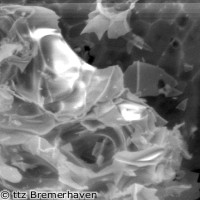EU-funded project develops soil regeneration method
The EU-funded CLEANSOIL project has developed a method for the regeneration of contaminated soil in situ. The method was successfully tested on soils in Russia and Ukraine, which have been heavily polluted with petrochemical residues and pesticides, proving particularly effective in removing the latter. An analysis done by the Russian Ministry of Agriculture in 2001 revealed that the country's regional soils were heavily polluted: 70 million hectares contained heavy metals, 2.5% had been contaminated with dangerous chemicals and 4% showed considerable pesticide contamination. As a result, farming has become impossible and the ground water, too, shows extreme levels of contamination. West Siberia and the Northern Caucasus, the Komi Republic, Bashkiria, the Republic of Tatarstan and the Volga Region are the most severely affected. However, the problem is not only limited to these regions. In the EU, it is estimated that as many as 1.5 million sites are polluted with heavy metals, polychlorinated biphenyls (PCBs) or chlorinated hydrocarbons. Such sites include former military bases, machinery repair and fuel stations, and industrial production sites. The current method of choice for cleaning up these sites is the excavation and removal of the polluted soil. This treatment is highly expensive, ranging from €59 to 109 million per hectare - depending on the technology used and the level of contamination, the CLEANSOIL consortium explains. Also, cleaning the top soil is not always feasible. The CLEANSOIL project tackled both of those problems. In order to remove the pollutants from the soil, the CLEANSOIL method works on the basis of absorption: a network of sockets inside perforated pipes is laid out along a number of horizontal holes drilled into the ground. According to the project partners, drilling horizontally is particularly effective as underground contamination frequently spreads horizontally rather than vertically. The sockets contain sorbents that absorb the contaminants with the help of the moisture of the subsoil. Once the process is completed, the sockets and pipes can simply be removed and the sorbents decontaminated, so that they can be re-used. Different sorbents can be used, depending on which is most appropriate for the pollutant at hand. In addition, the CLEANSOIL method can be applied underneath existing infrastructures such as warehouses, from which contaminants may have leaked. CLEANSOIL brought together eight research and industry partners from inside and outside the EU and received about €750,000 in funding under the Sixth Framework Programme (FP6) with an additional €200,000 contributed by other sources.
Countries
Russia, Ukraine



